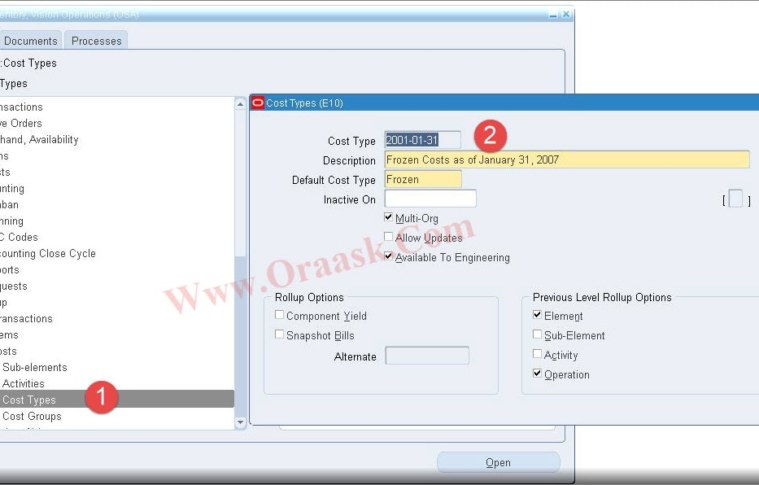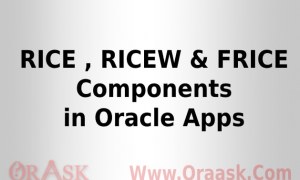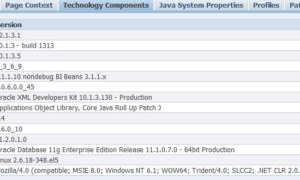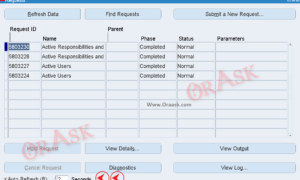Types of costing in oracle cost management Simple & clear explanation.
Types of costing:
Standard Costing:
In this type of costing the cost of all the items and resources are defined in the system ASA they are created and / or imported prior to performing any transaction.
The standard cost is revised – generally – at the beginning of the year based on the values collected in the variance account.
- If any organization is adopting “Standard” Costing method, then the system defined cost would be “Frozen” and the user defined cost would be “Pending”
- The pending cost can be updated online here as the frozen cost will have to updated based on the updated pending cost.
Average Costing
- In this type of costing the cost of all the resources (labor, etc ) are defined in the system whereas the item cost is derived from the purchasing and / or inter –org receipts
- Every time there is a receipt performed, the cost changes based on the average value. The system averages out automatically.
- The average costing method provides a real time cost of the transactions and the items.
- This is mostly preferred In the case of manufacturing industry since the end product is coasted with almost all real costs computed .since this system provides a real time cost. the system does not maintain any variance account
- If any organization is adopting “Average” costing method then the system defined cost would be “Average” and the user defined cost would be “Avg. Rate.
- The avg rate cost can be updated online whereas the average cost will have to updated based on then updated Avg Rate cost.
FIFO and LIFO costing
- In the case of FIFO and LIFO the system maintains costs in different layers – a and when fresh lots and received
- The layers are even maintained on the shop floor when the items are issued for manufacturing. however please noe that this is maintained by the system but In actual practice , it is possible that there could be a mix up of lots which physically issuing.
You can refer for more details about cost types from Oracle Cost Management User’s Guide : Here
How to define costing types ? see below the steps:
Navigation:
Inventory Responsibility ==> Setup ==> Costs ==> Cost Types
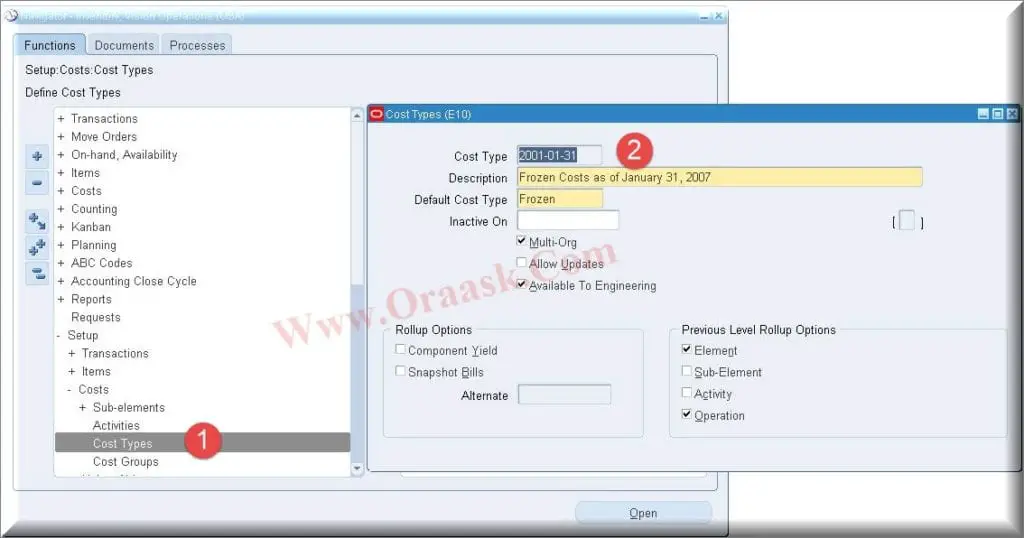
Concept of costing and its impact in oracle EBS
- Cost is an amount that is incurred at the time of procuring any item or during manufacture of any item.
- Cost and price are two different entities and should never be mixed.
- For ‘Purchased’ items the cost is the total amount spent in acquiring the item. This would include the purchase order price plus the taxes that are applicable plus the freight and insurance.
- For “Manufacture” items , the cost would be that total of all the item costs plus the manufacturing cost (which would include the cost of labor, rent for the place , electricity , fuel , etc )
- An “item cost” comprises of several Cost elements.
- Material Cost
- Material overhead cost
- Resource cost
- Outside processing
- Overhead
How to assign cost to an item? See below steps:
Navigation :
- Inventory Responsibility ==> Costs ==> Item Cost
- Click New
- Insert an Item
- Choose The Cost Type
- Click Cost Button
- Enter Cost Element & Sub Element
- Enter Rate OR Amount
- Click Save.
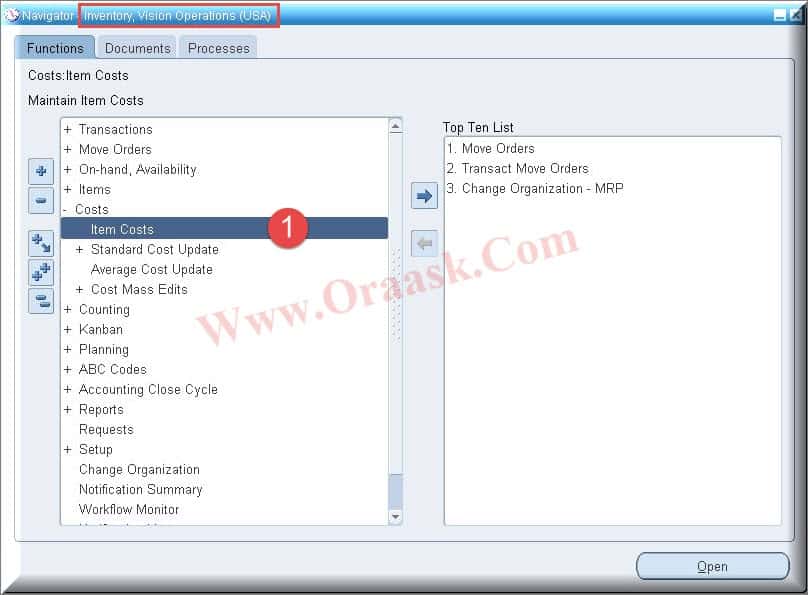
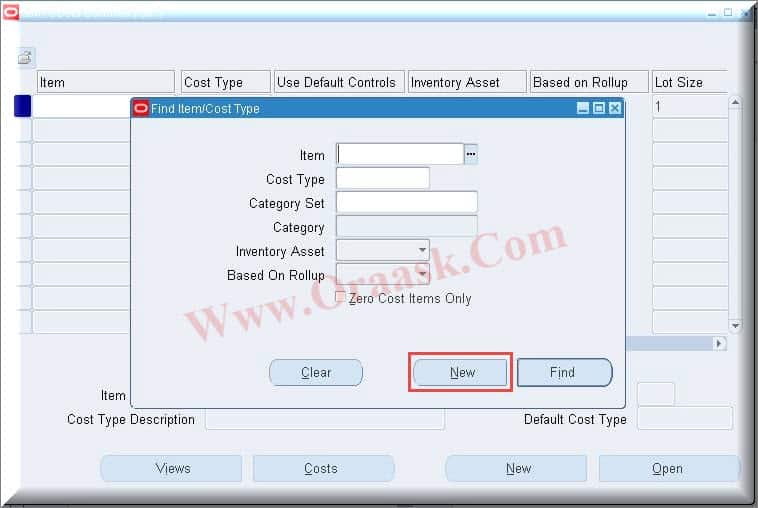
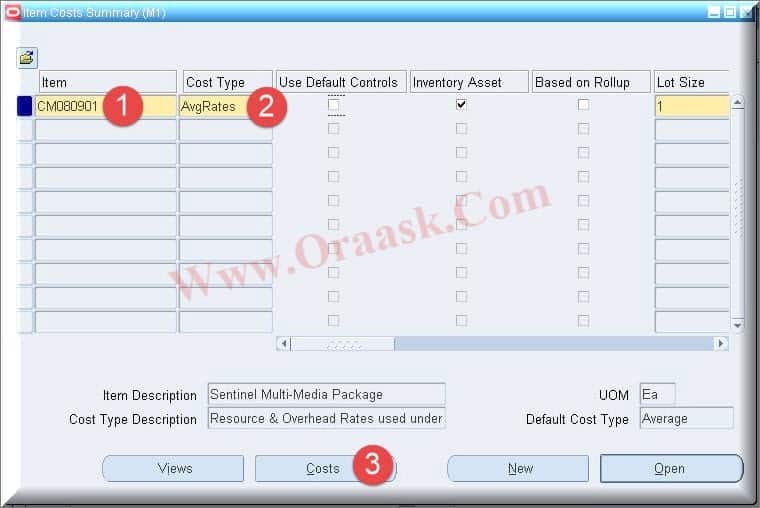
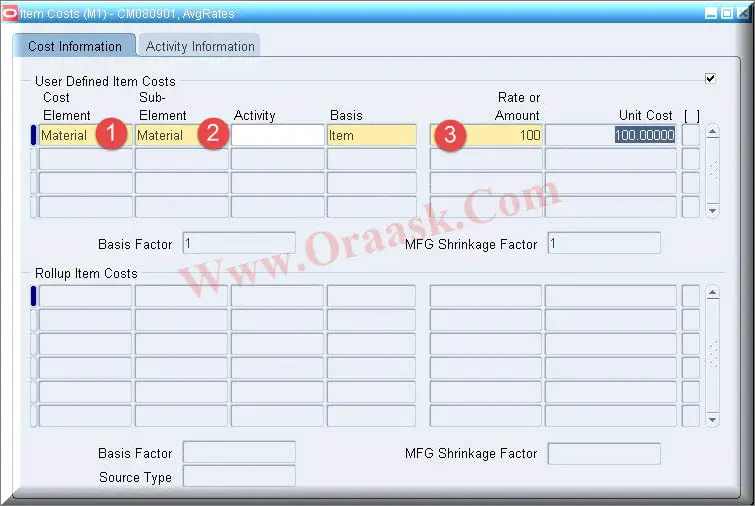
Hope this helpful.
